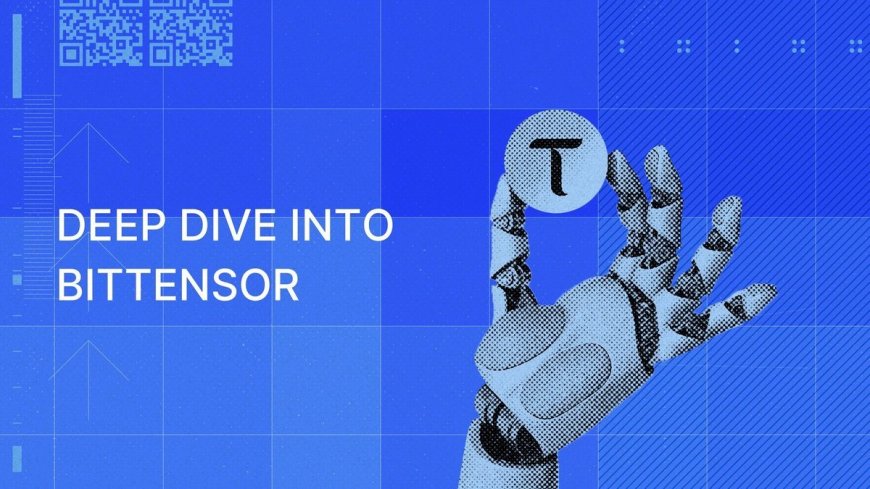Bittensor's Dynamic Tao: Revolutionizing Decentralized AI Governance and Resource Allocation
Bittensor, the pioneering decentralized AI network, is set to undergo a significant transformation with the introduction of Dynamic Tao. This innovative proposal aims to revolutionize the project's governance structure and resource allocation mechanism, paving the way for a more decentralized and efficient ecosystem. In this article, we'll explore the key aspects of Dynamic Tao and its potential impact on Bittensor's future.

The Need for Change: Current Challenges in Bittensor
Bittensor has been facing several challenges with its current system:
- Centralized decision-making: A small group of large validators currently control the allocation of resources.
- Inefficient resource allocation: The current system suffers from cronyism and a lack of attention to detail.
- Limited participation: Not all token holders have a say in the project's direction.
- Scalability concerns: The current structure may not be able to support the rapid growth and diversification of the network.
To address these issues, the Bittensor team has proposed Dynamic Tao, a new approach to governance and resource allocation.
Understanding Dynamic Tao
Dynamic Tao is a market-based mechanism designed to:
- Decentralize governance: Allow a wider range of participants to influence the project's direction.
- Improve resource allocation: Create a more efficient system for distributing emissions to valuable subnets.
- Increase participation: Enable all token holders to have a say in the ecosystem's development.
- Enhance scalability: Support the growth of numerous subnets and diverse AI applications.
Key Features of Dynamic Tao
- Subnet tokens: Dynamic Tao introduces subnet-specific tokens that represent a stake in individual subnets.
- Liquid democracy: Token holders can allocate their stake to different subnets, effectively voting on their importance.
- Market-driven allocation: The demand for subnet tokens determines the distribution of emissions.
- Risk and reward: Participants take on some risk when staking in specific subnets, but can potentially earn higher rewards.
- Flexible staking options: Users can stake in individual subnets or potentially in baskets of subnets.
Governance Changes
One of the most significant aspects of the Dynamic Tao proposal is the change in Bittensor's governance structure. The project is moving towards a more decentralized model with three key components:
- Delegates: Large token holders who validate and allocate resources.
- Subnet owners: Builders and creators of individual subnets.
- Triumvirate: A group holding the "pseudo key" for implementing changes.
This new structure requires a two-of-three majority vote between these entities to implement protocol changes, ensuring a more balanced decision-making process. The goal is to create a system where no single entity has unilateral control over the network's future.
The Role of the Community
Under the new governance model, the Bittensor community will play a crucial role in shaping the project's future. Community members can:
- Propose improvements through the Bittensor Improvement Proposal (BIP) system
- Participate in discussions and provide feedback on proposed changes
- Influence the network's direction through their staking choices
This increased community involvement is expected to foster innovation and ensure that the project remains aligned with the needs and desires of its users.
Impact on Staking and Validation
The introduction of Dynamic Tao will significantly change how staking and validation work in the Bittensor ecosystem:
- Subnet-specific staking: Instead of staking Tao directly, users will stake into specific subnets or a basket of subnets.
- Validator diversification: The new system encourages a more diverse set of validators, potentially specializing in specific subnets.
- Aligned incentives: Validators will have a stronger incentive to perform well in the subnets they validate, as they'll hold the corresponding subnet tokens.
- Dynamic reward distribution: Rewards will be distributed based on the performance and popularity of individual subnets.
Changes for Nominators
Nominators (those who stake their Tao with validators) will see some changes in how they participate:
- They'll need to choose which subnets to stake in, either directly or through their chosen validator
- This introduces an element of active management to the staking process
- Potentially higher rewards for those who make informed decisions about subnet selection
The Mechanics of Dynamic Tao
To understand how Dynamic Tao works, it's important to delve into some of the technical details:
- Token conversion: When users stake Tao, it's converted into subnet-specific tokens.
- Price discovery: The demand for each subnet token determines its price relative to Tao.
- Emission allocation: Subnets with higher-valued tokens receive a larger share of the network's emissions.
- Liquidity pools: Each subnet has a liquidity pool that facilitates the conversion between Tao and subnet tokens.
This system creates a dynamic marketplace where the value of each subnet is constantly being reassessed based on its utility and popularity within the ecosystem.

Potential Benefits of Dynamic Tao
- Improved resource allocation: By leveraging market dynamics, resources can be more efficiently distributed to valuable subnets.
- Increased participation: All token holders can influence the ecosystem's direction through their staking choices.
- Better alignment of interests: Subnet owners, validators, and token holders will have more aligned incentives.
- Scalability: The new system can potentially support hundreds or thousands of subnets, fostering innovation.
- Meritocratic development: Subnets that provide real value will naturally attract more stake and resources.
- Reduced centralization risks: The diversification of validators and stake across multiple subnets reduces the risk of centralized control.
Challenges and Concerns
While Dynamic Tao offers numerous benefits, some challenges and concerns have been raised:
- Complexity: The new system may be more complex for casual users to understand and participate in.
- Risk for stakers: Staking in specific subnets introduces some risk, as the value of subnet tokens can fluctuate.
- Potential for manipulation: There are concerns about the possibility of creating "vaporware" subnets to attract stake.
- Learning curve: Validators and nominators will need to adapt to the new system and potentially develop new strategies.
- Short-term volatility: The transition to the new system could lead to some short-term volatility in subnet valuations.
Addressing the Challenges
The Bittensor team and community are actively working on addressing these concerns:
- Developing user-friendly interfaces to simplify the staking process
- Creating educational resources to help users understand the new system
- Implementing safeguards against manipulation, such as vetting processes for new subnets
- Considering the introduction of "safe" staking options for more risk-averse users
The Road Ahead
The Dynamic Tao proposal is still in its draft stage, and the Bittensor team is actively seeking feedback from the community. The implementation of this new system is expected to take several months, with a thorough review and approval process.
Key next steps include:
- Community feedback: Gathering input from token holders, validators, and subnet owners.
- Refining the proposal: Addressing concerns and incorporating suggestions from the community.
- Governance vote: Putting the final proposal to a vote using the new governance structure.
- Gradual implementation: If approved, the changes will likely be implemented in phases to ensure a smooth transition.
- Monitoring and adjustment: Closely watching the effects of the new system and making adjustments as necessary.
Timeline and Milestones
While exact dates haven't been set, a rough timeline for the implementation of Dynamic Tao might look like this:
- Q2 2023: Proposal refinement and community discussion
- Q3 2023: Governance vote and initial preparations
- Q4 2023: Begin phased implementation
- Q1-Q2 2024: Full rollout and fine-tuning of the system
Impact on Bittensor's Future
The introduction of Dynamic Tao has the potential to significantly impact Bittensor's future in several ways:
- Accelerated innovation: By allowing for easier creation and funding of new subnets, Dynamic Tao could spur a wave of innovation in AI applications.
- Increased adoption: A more decentralized and participatory system could attract more users and developers to the Bittensor ecosystem.
- Competitive advantage: The unique governance and resource allocation model could set Bittensor apart from other AI and blockchain projects.
- Evolving use cases: As the ecosystem grows, new and unexpected applications of Bittensor's technology could emerge.
The Bigger Picture: Decentralized AI
Bittensor's Dynamic Tao proposal is part of a larger trend towards decentralized AI development. This movement aims to:
- Democratize access to AI technology
- Reduce the concentration of power in the hands of a few large tech companies
- Encourage open-source development and collaboration
- Align AI development with the broader interests of society
By creating a more decentralized and participatory system, Bittensor is positioning itself at the forefront of this important technological and social movement.
Conclusion
Dynamic Tao represents a bold step forward for Bittensor, aiming to create a more decentralized, efficient, and participatory ecosystem for AI development. By leveraging market dynamics and aligning incentives, the proposal seeks to overcome current limitations and set the stage for Bittensor's long-term growth and success.
As the project moves forward, it will be crucial for all stakeholders to engage in the discussion and provide feedback. The success of Dynamic Tao will ultimately depend on the collective wisdom and participation of the Bittensor community.
For those interested in the future of decentralized AI and innovative governance models, Bittensor's Dynamic Tao proposal is certainly a development worth watching closely. As the project evolves, it has the potential to set new standards for decentralized organizations and AI development platforms.
The coming months will be critical for Bittensor as it navigates this significant transition. How well the project manages this change could determine its place in the rapidly evolving landscape of AI and blockchain technology. With its ambitious vision and engaged community, Bittensor is well-positioned to make a lasting impact on the future of decentralized AI.
Source : @The Bittensor Hub.















